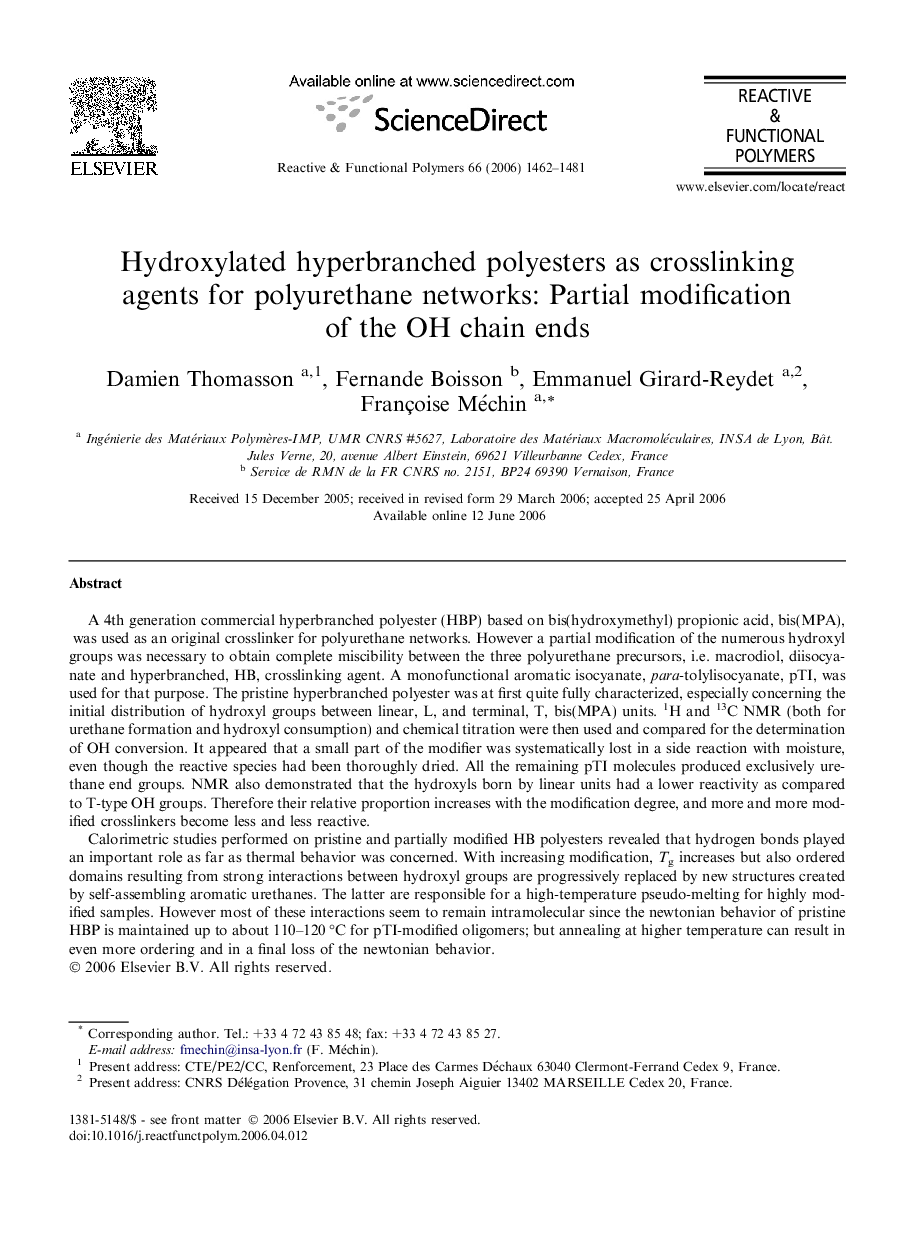| Article ID | Journal | Published Year | Pages | File Type |
|---|---|---|---|---|
| 5211484 | Reactive and Functional Polymers | 2006 | 20 Pages |
Abstract
Calorimetric studies performed on pristine and partially modified HB polyesters revealed that hydrogen bonds played an important role as far as thermal behavior was concerned. With increasing modification, Tg increases but also ordered domains resulting from strong interactions between hydroxyl groups are progressively replaced by new structures created by self-assembling aromatic urethanes. The latter are responsible for a high-temperature pseudo-melting for highly modified samples. However most of these interactions seem to remain intramolecular since the newtonian behavior of pristine HBP is maintained up to about 110-120 °C for pTI-modified oligomers; but annealing at higher temperature can result in even more ordering and in a final loss of the newtonian behavior.
Related Topics
Physical Sciences and Engineering
Chemistry
Organic Chemistry
Authors
Damien Thomasson, Fernande Boisson, Emmanuel Girard-Reydet, Françoise Méchin,
